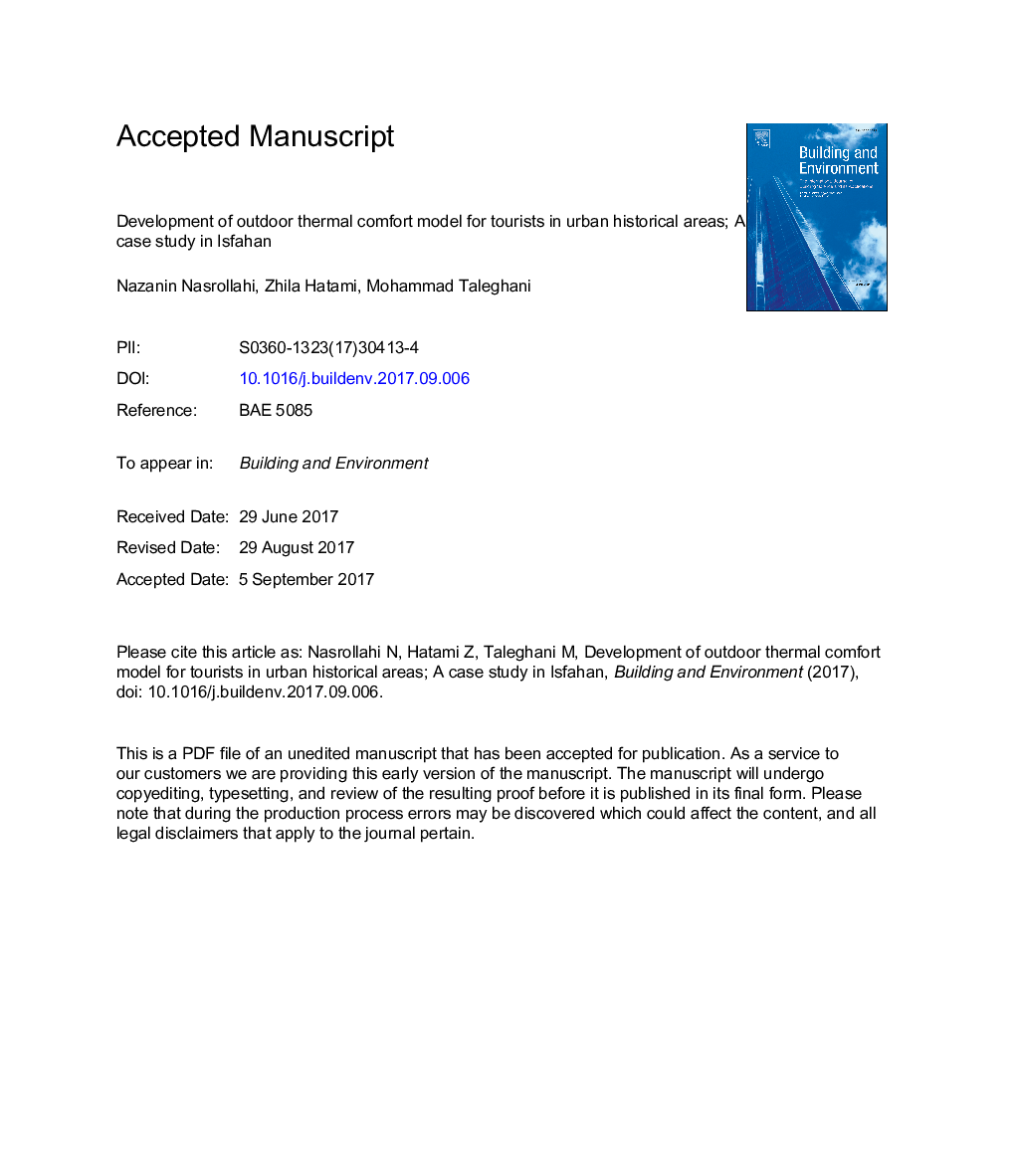| Article ID | Journal | Published Year | Pages | File Type |
|---|---|---|---|---|
| 6698641 | Building and Environment | 2017 | 42 Pages |
Abstract
The present study intended to evaluate thermal comfort conditions in microclimates of the urban historical areas of Isfahan, Iran during a heatwave. The thermal comfort conditions of different historical sites were compared during the daylight hours to determine the best time to visit each historical site. Using the results of this study, tourists can select the best timeframe with appropriate thermal conditions to visit the historical sites of Isfahan. Along with performing field measurements in the intended historical sites, a questionnaire was used to determine the thermal comfort range of tourists. ENVI-met is used in order to properly simulate the outdoor thermal environment of the historical touristic areas in Isfahan during the hottest as well as the most touristic month of the year. The results of questionnaire and simulations are compared with each other. It was shown that three historical sites with higher thermal stress experience an unpleasant thermal condition. The results of questionnaire show that the comfort range of tourists is within 23.06-29.73 °C PET. The thermal conditions of Si-o-Se Pol, Hasht Behesht and Naqsh-e-Jahan are within the thermal comfort range at 19,20 and 21 p.m. respectively. During the daytime, thermal comfort conditions varied from 4.9 °C PET at 8 a.m. to 8.1 °C PET at 3 p.m. Early morning hours were the most comfortable time to visit the historical sites of Menar-e-Jonban, Masjed-e-Jame and Vank Cathedral in Isfahan. During the peak hours of heat, the priority of thermal comfort goes to Masjed-e-Jame, Menar-e-Jonban and Si-o-Se Pol, respectively.
Related Topics
Physical Sciences and Engineering
Energy
Renewable Energy, Sustainability and the Environment
Authors
Nazanin Nasrollahi, Zhila Hatami, Mohammad Taleghani,
